Archive
Pantheon Books
- Pantheon Books
- Publishing House
Pantheon Books was a publishing house founded in 1942 by the German émigré Kurt Wolff (1887–1963) and aimed at the exiled European community in New York.
Word Count: 24
41 Washington Square, Greenwich Village, Manhattan, New York City (1942–1946/47); 333 6th Avenue, Greenwich Village, Manhattan, New York City (1946/47).
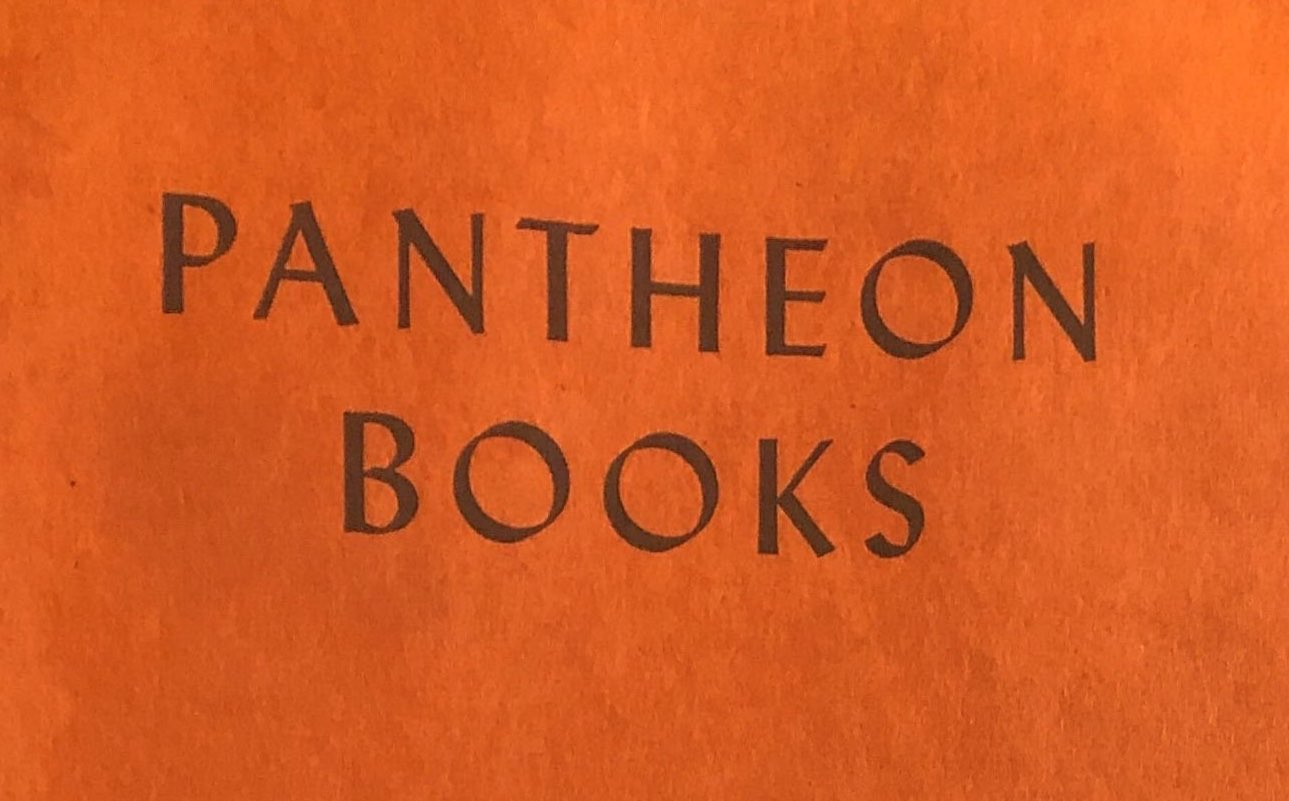
Pantheon Books sign (© Fred Stein Archive). 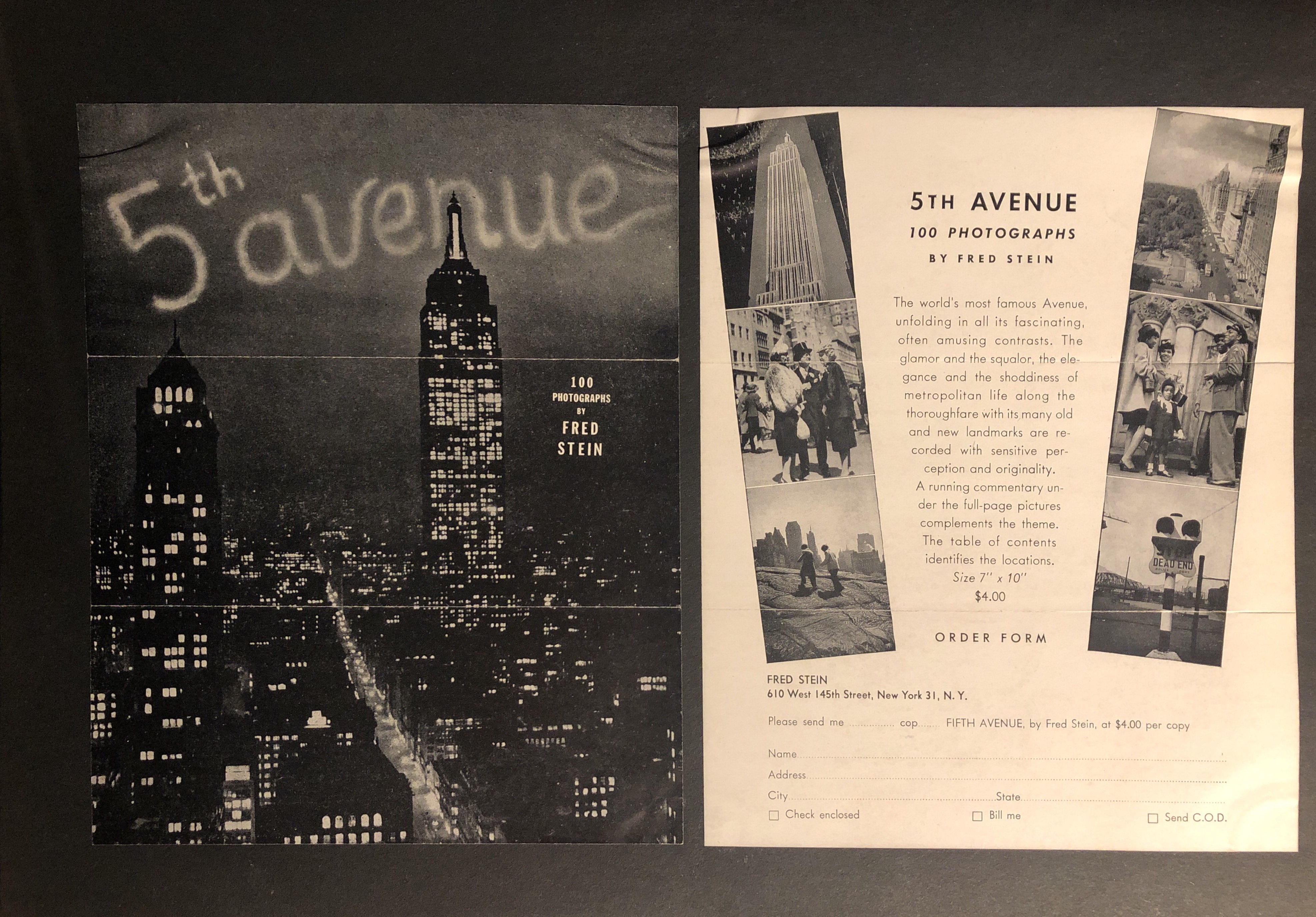
Cover of 5th Avenue photobook (Pantheon Books, 1947) by Fred Stein (© Fred Stein Archive). 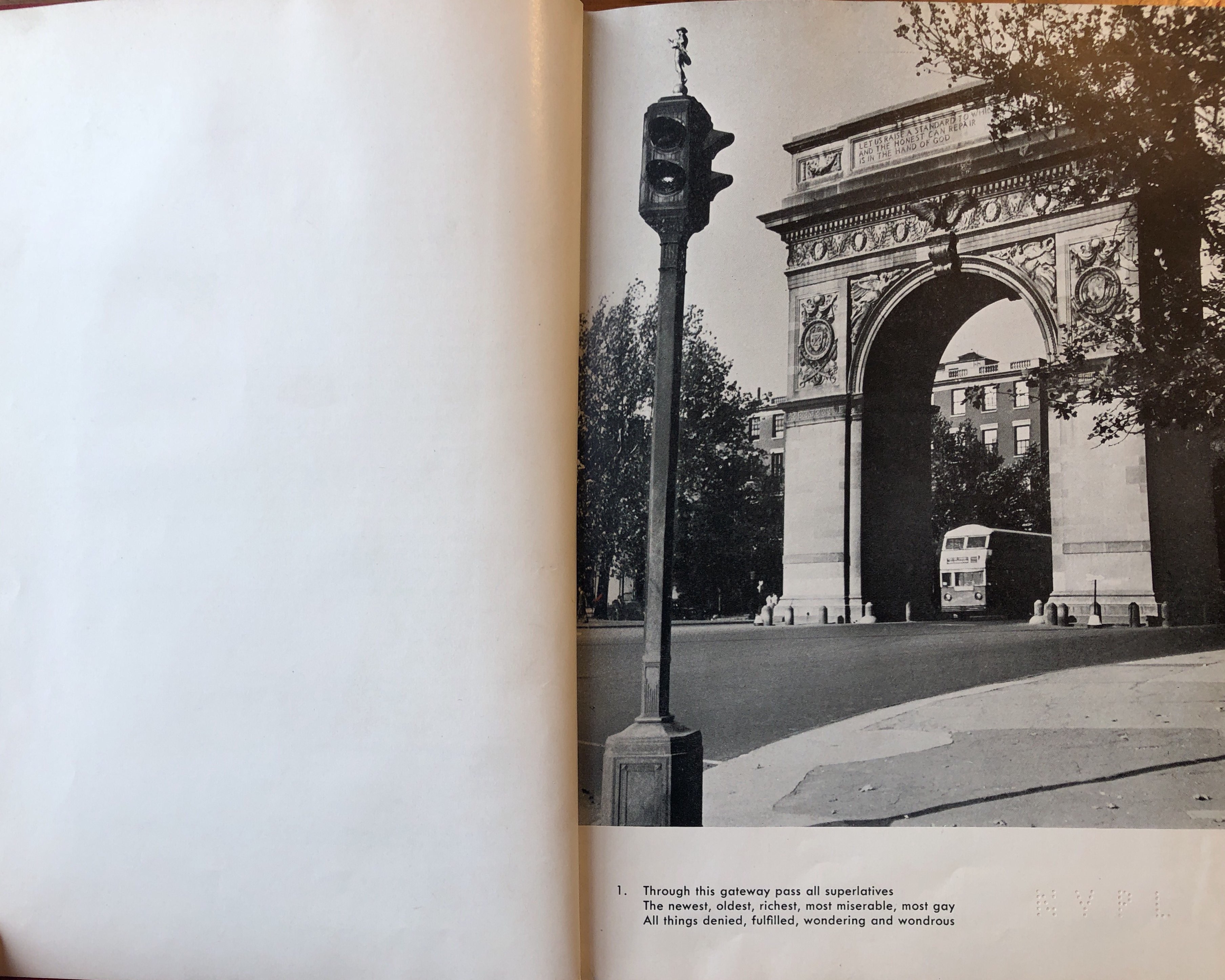
First page of 5th Avenue (Pantheon Books, 1947) by Fred Stein (© Fred Stein Archive). 
Page of 5th Avenue (Pantheon, 1947) by Fred Stein. 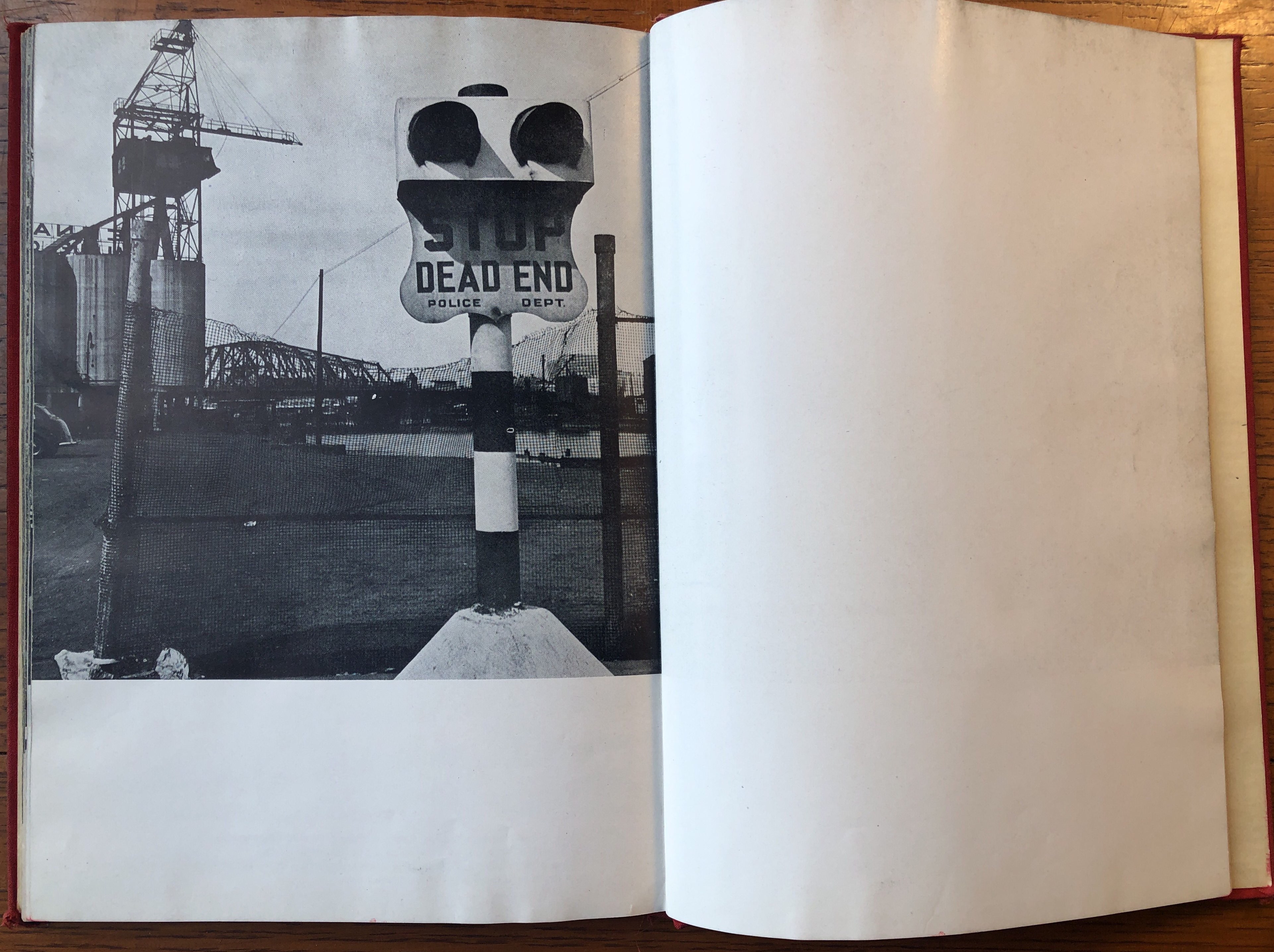
Last page of 5th Avenue (Pantheon Books, 1947) by Fred Stein (© Fred Stein Archive). 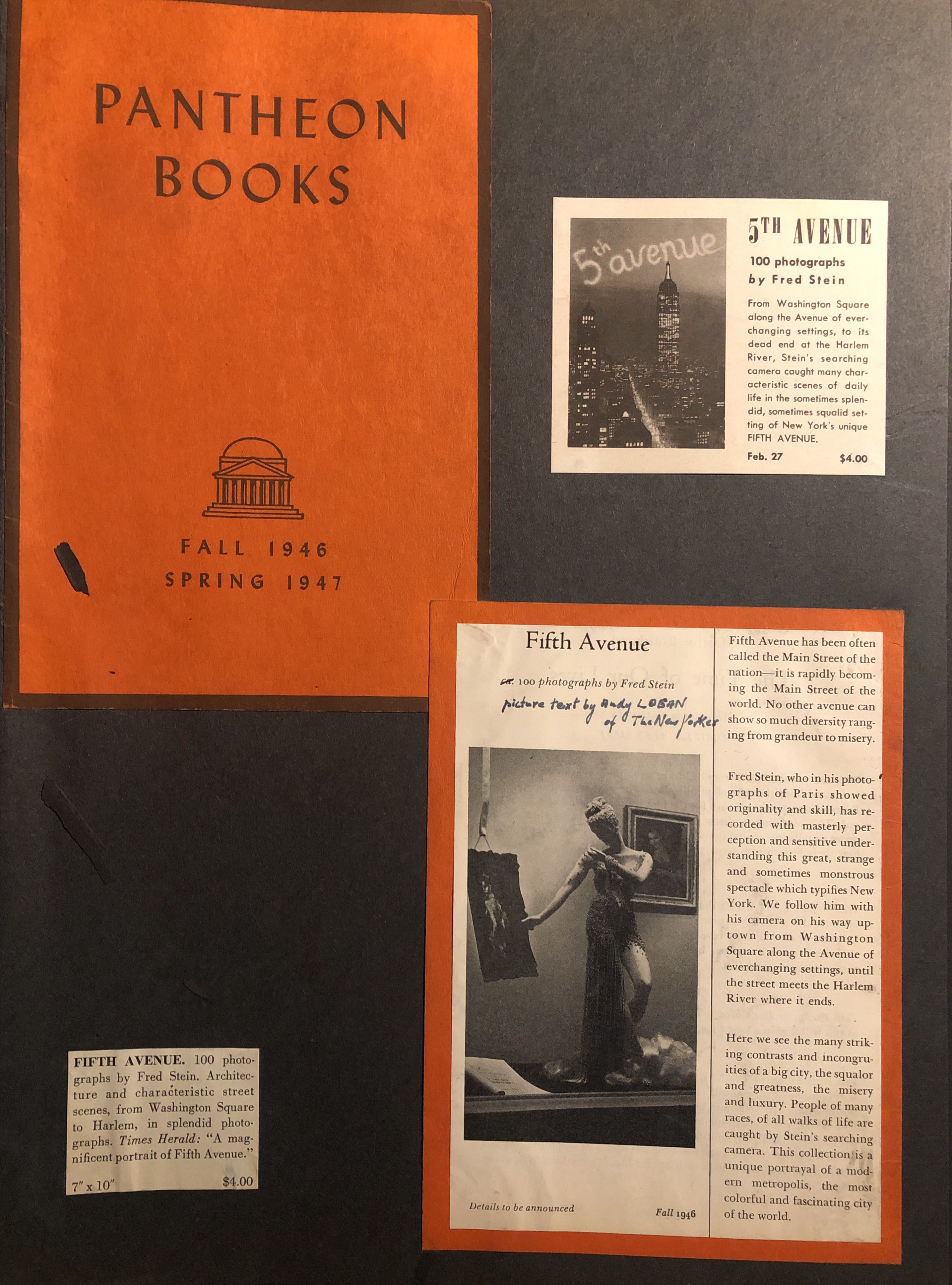
Page from Fred Stein’s scrapbook showing Pantheon Books Catalogue (Fall 1946, Spring 1947), which includes 5th Avenue (© Fred Stein Archive). 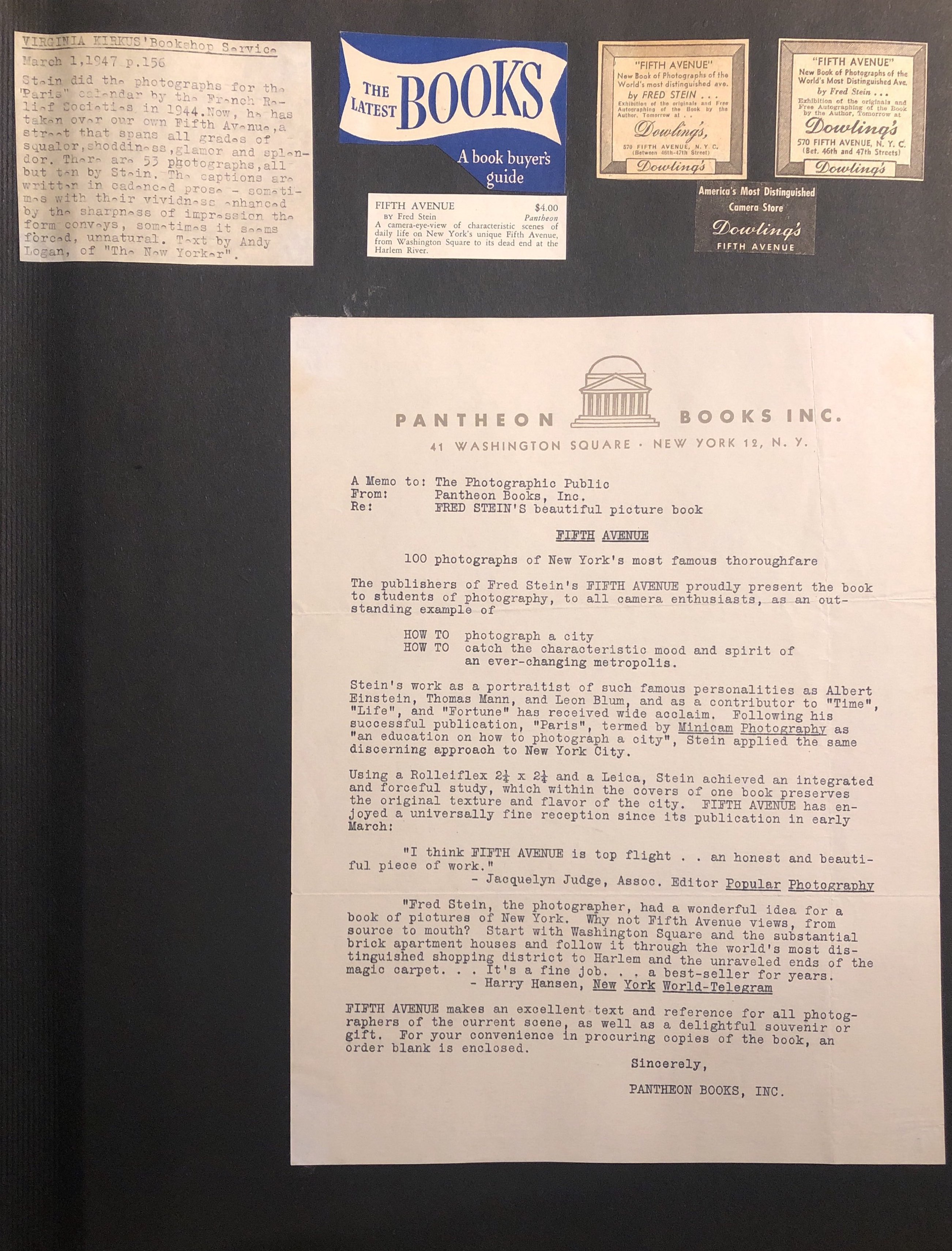
Announcement by Pantheon Books from Fred Stein’s scrapbook (© Fred Stein Archive). 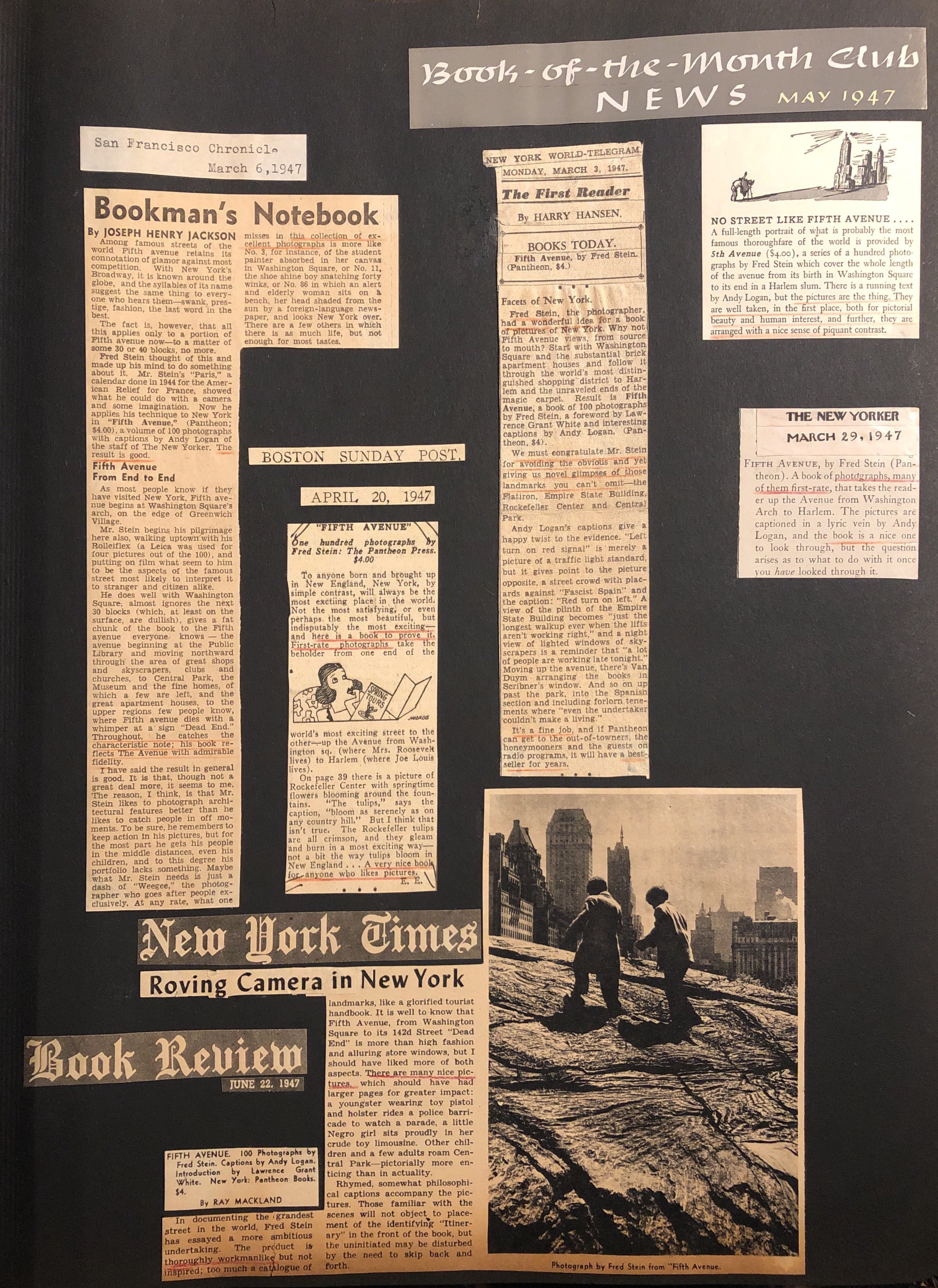
Mixed articles and reviews on 5th Avenue photobook form Fred Stein's scrapbook (© Fred Stein Archive). 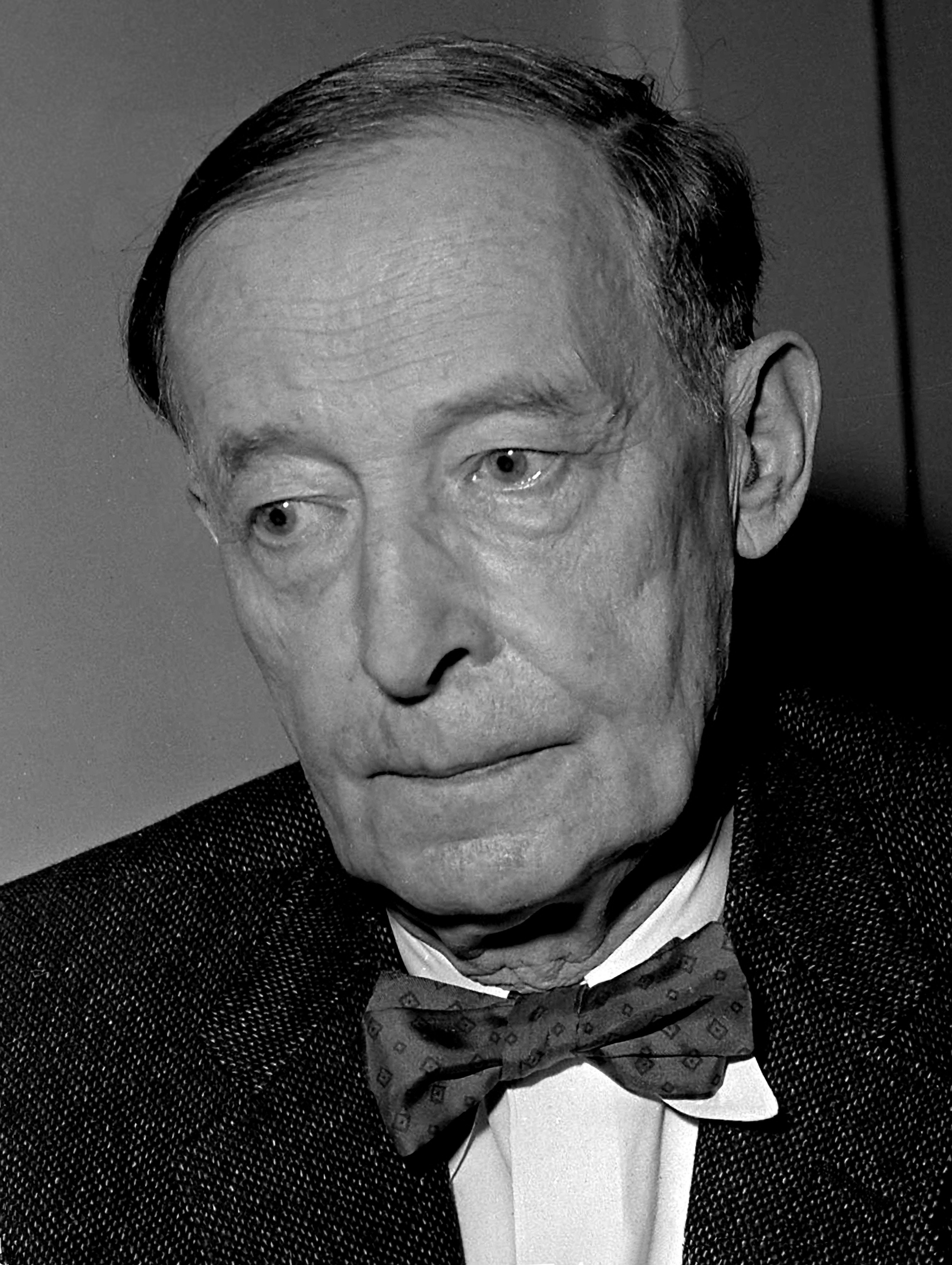
Portrait of Kurt Wolff (of publishing house Pantheon Books) by Fred Stein, 1959 (© Fred Stein Archive). 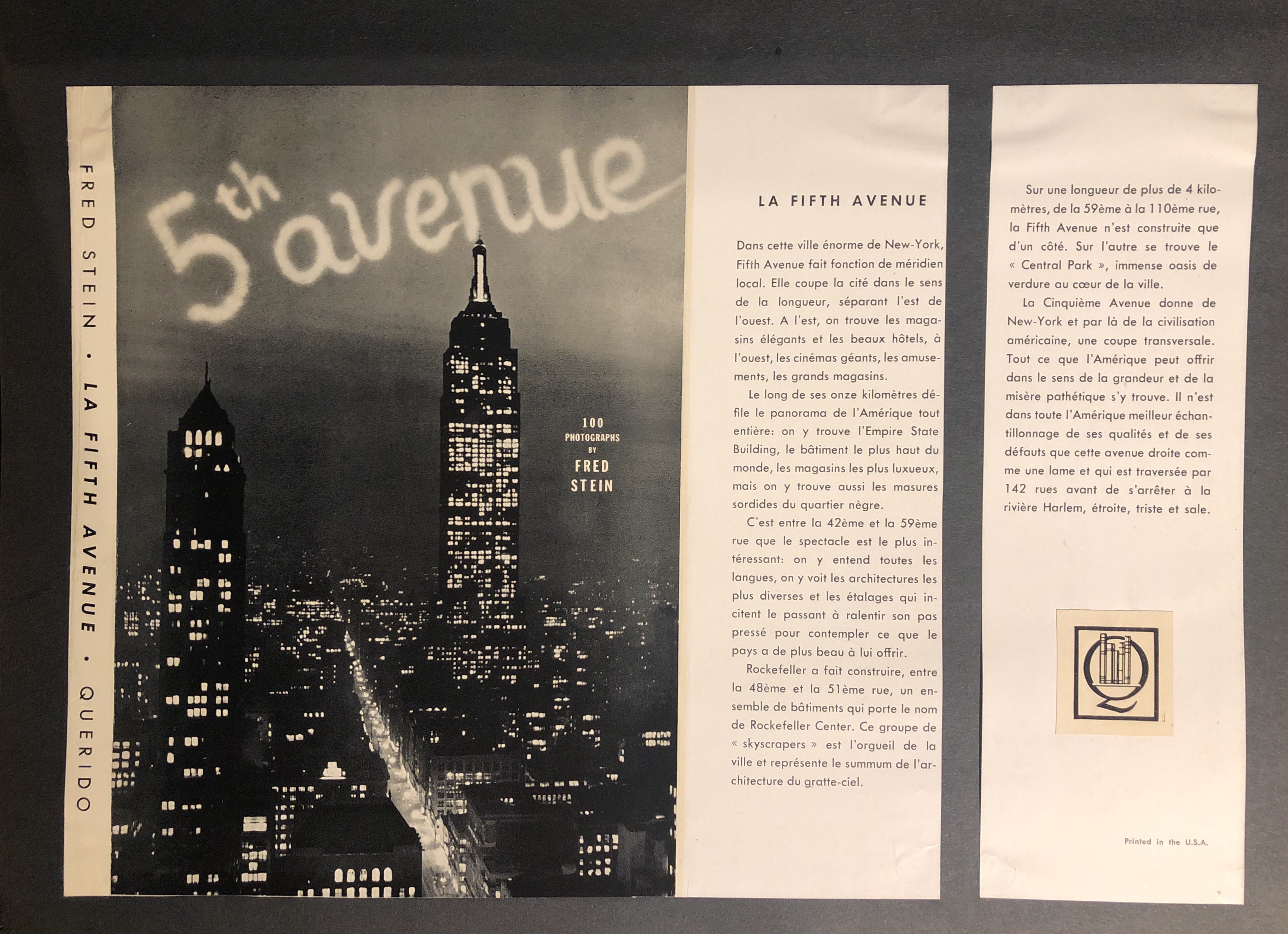
Cover of the French edition 5th Avenue (Querido, 1947) by Fred Stein (© Fred Stein Archive). Abel, Richard, and Gordon Graham, editors. Immigrant Publishers. The Impact of Expatriate Publishers in Britain and American in the 20th Century. Transaction Publishers, 2009.
Grebe, Stefanie. “Vom Buch an die Wand – Ein Fotobuch als Ausgangsmaterial für eine Fotografieausstellung.” Gedruckte Fotografie. Abbildung, Objekt und mediales Format (Visuelle Kultur. Studien und Materialien, vol. 10), edited by Irene Ziehe and Ulrich Hägele, Waxmann, 2015, pp. 171–183.
Neteler, Theo. “Kurt Wolff verlässt Leipzig. Nicht Darmstadt, sondern München wird neuer Verlagssitz.” Aus dem Antiquariat. Zeitschrift für Antiquare und Büchersammler, vol. 7, 2009, pp. 3–11.
Parr, Martin, and Gerry Badger. The Photobook: A History. Vol. 1. Phaidon, 2004.
Phillips, Zlata Fuss, editor. German Children’s and Youth Literature in Exile 1933–1950. K.G. Saur, 2001.
Report from Exile. Fotografien von Fred Stein, edited by Raphael Gross and Ulrike Kuschel, exh. cat. Deutsches Historisches Museum, Berlin, 2020.
Seeber, Ursula, et. al., editors. Exilforschung. Ein internationales Jahrbuch, vol. 22: “Kometen des Geldes” Ökonomie und Exil. edition text + kritik, 2015.
Weidle, Barbara, editor. Kurt Wolff. Ein Literat und Gentleman. Weidle, 2007.
Wolff, Kurt. Autoren, Bücher, Abenteuer. Betrachtungen und Erinnerungen eines Verlegers. Wagenbach, 1965.
Ziehe, Irene, and Ulrich Hägele, editors. Gedruckte Fotografie. Abbildung, Objekt und mediales Format (Visuelle Kultur. Studien und Materialien, vol. 10). Waxmann, 2015.
Word Count: 228
Word Count: 39
My deepest thanks go to Peter Stein for providing me with photographs and archival material of the Fred Stein Estate.
Word Count: 20
- 1942
- 1960
Fred Stein, Tim Gidal
- New York
- Helene Roth. "Pantheon Books." METROMOD Archive, 2021, https://archive.metromod.net/viewer.p/69/2948/object/5145-9978773, last modified: 09-06-2021.
-
Fred SteinPhotographerLawyerNew York
Always accompanied by his camera, the German émigré photographer Fred Stein discovered New York City during the 1940s and 1950s. His pictures provide an human and multifaceted view of the metropolis.
Word Count: 31
Tim GidalPhotographerPublisherArt HistorianNew YorkTim Gidal was a German-Jewish photographer, publisher and art historian emigrating in 1948 emigrated to New York. Besides his teaching career, he worked as a photojournalist and, along with his wife Sonia Gidal, published youth books.
Word Count: 35
Chinatown U.S.A.PhotobookNew YorkChinatown U.S.A. is a photobook published by the German émigré photographer Elizabeth Coleman in 1946 focusing on American-Chinese communities in New York and San Francisco.
Word Count: 26
5th AvenuePhotobookNew York5th Avenue was the first photobook by Fred Stein and was created in 1947 with the publishing house Pantheon Books.
Word Count: 19
J.J. Augustin Incorporated PublisherPublishing HouseNew YorkJ.J. Augustin was a German publishing house in Glückstadt with a long history, going back to 1632. In 1936 the American branch opened in New York with a large artistic and cultural focus.
Word Count: 33
Schocken BooksPublishing HouseNew YorkSchocken Books was a publishing house established in 1945 in New York by the Russian émigré Salman Schocken (1898–1959). It specialised in books on Judaica and Hebrew topics.
Word Count: 26
Querido Inc.Publishing HouseNew YorkFritz H. Landshoff’s Querido publishing house was originally an offshoot of Emanuel Querido's Querido Uitgeverij Dutch publishing house in Amsterdam. Querido Verlag was created in 1933 to publish work by German political exiles.
Word Count: 33
Beggar BarBarNew YorkBeggar Bar was an artists bar and cabaret which was founded in 1941 by the German actress and dancer Valeska Gert (1892–1978).
Word Count: 20
Hermann LandshoffPhotographerNew YorkBesides outdoor fashion shots, Hermann Landshoff was a portrait and street photographer. During his time in New York, he captured the cultural, artistic and intellectual émigré scene as well as his photographer colleagues.
Word Count: 33
Andreas FeiningerPhotographerWriterEditorNew YorkAndreas Feininger, was a German émigré photographer who arrived in New York with his wife Wysse Feininger in 1939. He started a lifelong career exploring the city's streets, working as a photojournalist and writing a large number of photography manuals.
Word Count: 39
Alexey BrodovitchPhotographerArt DirectorGraphic DesignerNew YorkAlexey Brodovitch was a Belarus-born émigré graphic artist, art director and photographer who, from 1933, worked in New York for Harper’s Bazaar magazine and at the New School for Social Research.
Word Count: 31
Rolf TietgensPhotographerEditorWriterNew YorkRolf Tietgens was a German émigré photographer who arrived in New York in 1938. Although, in the course of his photographic career, his artistic and surrealist images were published and shown at exhibitions, his work, today, is very little known.
Word Count: 39
Marion PalfiPhotographerNew YorkMarion Palfi was a German émigré photographer who lived in New York from the 1940s to the 1960s. Her photographic engagement in social and political topics made her name for her use of the camera to draw attention to social injustices.
Word Count: 41
Mario BucovichPhotographerEditorNew YorkOnly a few details are known of the life and career of émigré photographer and publisher Mario Bucovich, who, after emigrating to New York, published the photobooks Washington D.C. and Magic Manhattan.
Word Count: 33
Lilo HessPhotographerNew YorkThe German émigré Lilo Hess was an animal photographer working for the Museum for Natural History and the Bronx Zoo, as well being a freelance photographer and publisher of children's books.
Word Count: 31
YllaPhotographerNew YorkYlla was an Austrian-born photographer who emigrated to New York in 1941. Specialising in animal photography, she produced not only studio photographs, but also shot outside on urban locations in the metropolis.
Word Count: 31
Ann Tizia LeitichJournalistAuthorArt CriticNew YorkAnn Tizia Leitich was an émigré Austrian author, journalist and art critic, who wrote essays, feuilletons and reviews on the American society and women for German and Austrian newspapers.
Word Count: 29
Henry RoxPhotographerSculptorNew YorkHenry Rox was a German émigré sculptor and photographer who, in 1938, arrived in New York with his wife, the journalist and art historian Lotte Rox (née Charlotte Fleck), after an initial exile in London. Besides his work as a sculptor, he began creating humorous anthropomorphised fruit and vegetable photographs.
Word Count: 50
Manhattan Magic. A collection of eighty-five photographsPhotobookNew YorkManhattan Magic is a photobook which was published in 1937 by the German émigré photographer Mario Bucovich in New York City.
Word Count: 20
New YorkBookPhotobookNew YorkIn 1932, after her remigration to Vienna, the Austrian journalist Ann Tizia Leitich published New York, an account of her life and writing experiences started as an emigrant in New York in the 1920s.
Word Count: 33
Oceana PublicationsPublishing HouseNew YorkOceana Publications Inc was a publishing house specialising in law and civil rights founded by the British émigré Philip F. Cohen (1911–1998) in 1945.
Word Count: 22